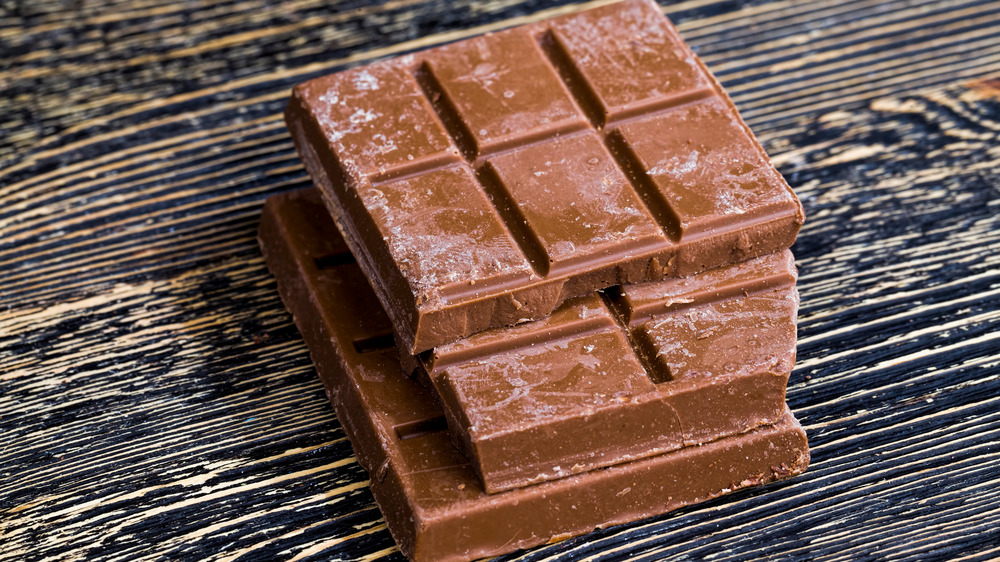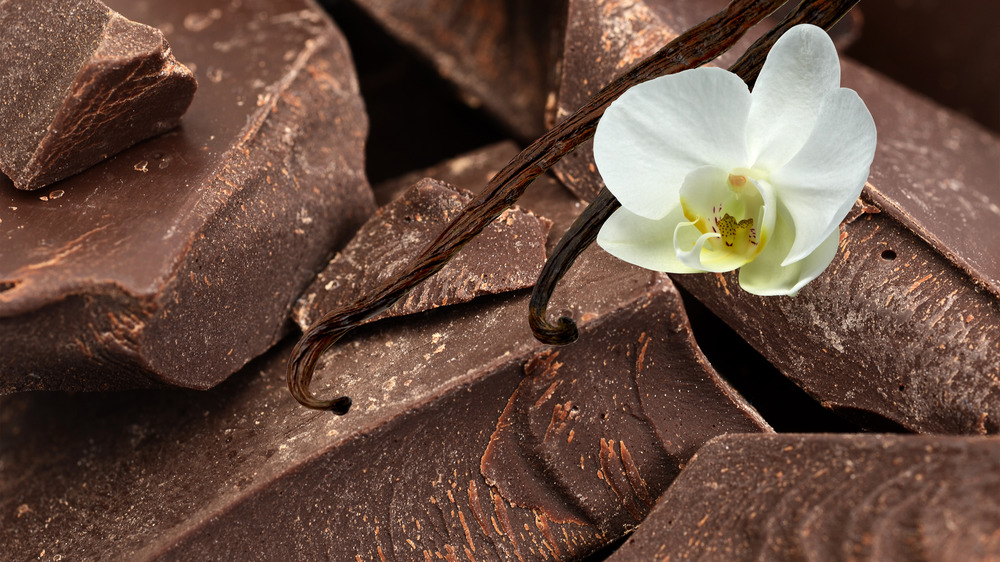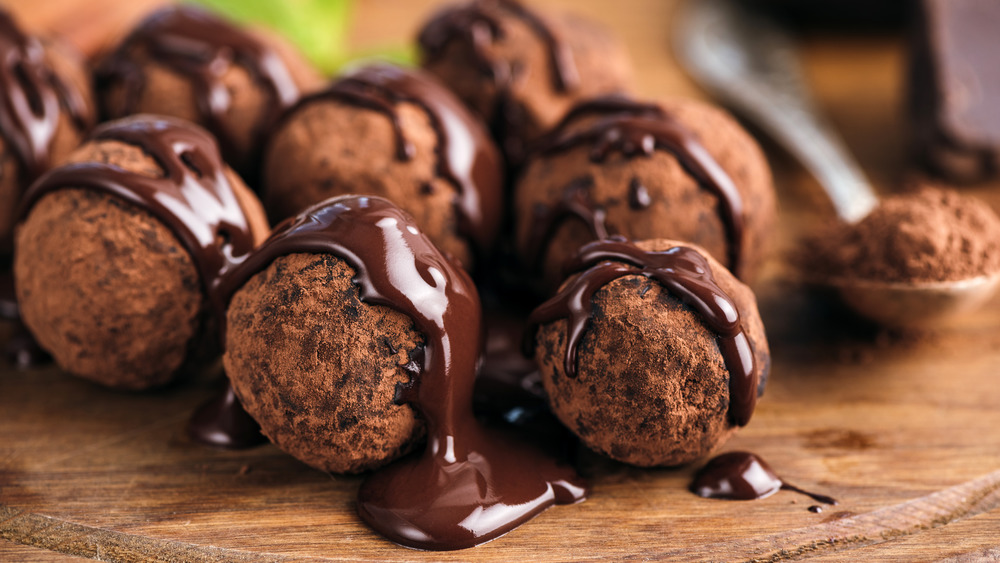This Is What That Gray Coating On Chocolate Really Means
Combining the words "gray" and "chocolate" in the same sentence isn't exactly appealing, yet you yearn for that chunk of buttery cocoa in your hand. Can you indulge in gray-coated chocolate without risk, and perhaps more importantly, will you enjoy the experience?
Despite the lackluster tint and look of decay, chocolate doesn't actually rot in your pantry. Best of Culinary explains that chocolate lacks moisture, so it's virtually impossible for it to grow mold. However, if not stored properly, chocolate can develop a chalky-gray layer that might make you recoil, but it won't make you sick. Perhaps your treasured confection isn't dusty-gray, but rather coated with grainy white matter. While equally disturbing, it's still harmless.
What happened to that beloved bar of sweetness? The Kitchn blames the environment — explaining that it was either too hot or too damp for the confection, causing what's known as chocolate "bloom," or discoloration and/or gray streaking on the surface. Callebaut adds that excess humidity can leave the surface of your chocolate gritty and white.
But don't race to the dumpster just yet; bloomed chocolate is totally safe to eat and enjoy (via myPanier). It's just perhaps not the ingredient for your finest batch of chocolate-covered strawberries. Why? Chocolate bloom doesn't impair the flavor or shelf-life of your chocolate — it's just not as attractive (via Asher's Chocolate Co). Cook's Illustrated reiterates that bloomed chocolate is suitable for eating and baking, but not really for dipping. Let's dig a little deeper to find out why.
Chocolate should be kept in consistently cool and dry places
There are two types of chocolate blooming, and Gillco explains that one is fat and one is sugar. Fat blooming is the most prevalent and it occurs when the chocolate gets too warm, causing the cocoa butter to soften, separate, rise to the surface, and re-solidify as gray streaks. The streaks can be on the surface or throughout the chocolate. TCHO adds that this separation of cocoa fat from the other ingredients can cause the chocolate to lose its signature shine.
Sugar blooming occurs when chocolate is exposed to moisture; the sugar in the chocolate absorbs the liquid, dissolves, and then evaporates, leaving a chalky layer on the surface (via Thrillist). That's why The Kitchn declares that you should never store chocolate in your humid refrigerator. Instead, chocolate should be kept in an airtight container in a cool, dark spot, like a low shelf or cabinet.
Chocolate Tempering Machines agrees and says the freezer is no place for chocolate either. The ideal temperature for chocolate is between 68 and 72 degrees Fahrenheit, and room humidity should never exceed 50 percent.
What if it's not your Halloween candy from 2010, but a bar you purchased yesterday? How Stuff Works asserts that it might be the fault of the candy manufacturer. Chocolate must be tempered, a process of heating and cooling the confection to stabilize the cocoa butter crystals. If Willy Wonka doesn't do it properly, those unstable crystals can transform, AKA bloom over time.
Can you still eat and cook with bloomed chocolate?
Despite its less-than-stellar appearance, bloomed chocolate is far from ruined. The Dello Mano Blog explains that bloomed chocolate tastes exactly like its un-bloomed brethren and you can do practically anything with it. But here's the rub: while the taste and consistency may remain the same, the chocolate may appear dull (who wants pallid truffles)? To bring back the chocolate's signature sheen, Ghirardelli recommends tempering it; melting and cooling your chocolate will reintegrate the cocoa butter, stabilize the confection, and bring back its smooth, glossy finish. One caveat: this works for fat-bloomed chocolate; sugar-bloomed chocolate will be irreversibly grainy. Crafty Baking states that tempering fat-bloomed chocolate eliminates unsightly gray streaks, but chocolate afflicted with sugar bloom shouldn't be used for your finest candy creations.
When you're ready to salvage your chocolate, Serious Eats shares three unique techniques for tempering; the first method uses your microwave or stovetop, the second involves a food processor and hair dryer, and the third requires a sous vide circulator.
What about the sugar-bloomed chocolate in your pantry? Lifehacker suggests using it in baking, asserting that chocolate chip cookies made with sugar-bloomed chocolate are just as fabulous as those made with flawless chocolate chips. You can also melt bloomed chocolate down and use it for hot chocolate, ganache, brownie batter, and chocolate bark (via My Recipes).
Still unhappy with your candy's facade? Chowhound proposes covering the bloom with edible luster dust, décor powder, and food color spray.


